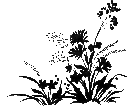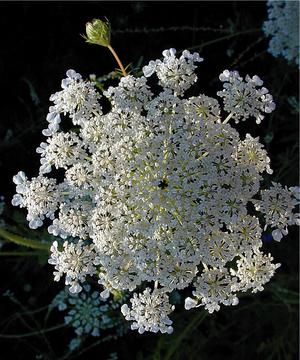 |
The Preserve |
News and Events |
Natural History |
The Trail |
Monitoring |
Restoration |
Library |
Organization |
|
Todmorden Mills Wildflower Preserve
|
Nature NotesYour nature guide for the week July 26-August 1Wildflowers
In the upland parts of the Preserve, the forest floor is beginning to dry out as summer progresses and as the trees gradually take up ground moisture. This drying triggers the spring wildflowers such as Mayapples and Trilliums to shut down the leaves and become dormant. Other cool-season plants such as Garlic Mustard are also shutting down. The tall flower stalks stand like dry, bleached skeletons. The plants may look dead, but the pods are full of ripe seeds which split open at the lightest touch. Examine a flower stalk with its ten to twenty pods, each pod holding about sixteen seeds, and you can understand why studies in Ontario have found up to 100,000 Garlic Mustard seeds per square metre in dense stands. In the swamp portions of the woodland trail, Spotted Jewelweed has started to flower. The speckled orange flowers produce nectar which bumblebees and hummingbirds feed on. Other wetland species that started flowering this week include pink-flowered Spotted Joe-Pye Weed and Swamp Milkweed. Wild FruitOne of the most common understorey shrubs at Todmorden, and indeed in most Toronto ravines, is Chokecherry. The clusters of berries have finally ripened, and the dark red clusters of fruit can be seen throughout the Preserve; this year is a bumper crop. The fruit is used to make wines, syrups, jellies, and jams, and it is a valued food source for wildlife. InsectsThere is good reason to keep to the formal walkways at present: the European Fire Ant doesn't seem to like the crushed brick substrate and is at lower density on the trail. In the forest, if you stand around for too long, or disturb the soil, the female workers will swarm out of a nearby nest and may sting. Nests can contain as many as 1,000 ants, and they can be spaced as closely as one metre apart. While the European species does not pack the punch of the South American fire ant that has invaded the southern United States, it can nonetheless inflict a painful sting. If you plan to strike out off-trail, we recommend pulling socks over your pants, and spraying your boots with bug repellent. The European Fire Ant has probably been at Todmorden for about 20 years. This invasive Eurasian species may have arrived in Canada in shipments of nursery stock from New England where it has been present for at least fifty years. In coastal areas of Maine, European Fire Ants are now a significant garden pest, and it seems inevitable that the ant will spread to the tableland above Todmorden and into gardens. Nature Notes is researched and written by Mike Dennison and Alejandro Lynch, and is published each week by Hopscotch Interactive (www.hopscotch.ca). In addition to this online version, Nature Notes is available as a print-friendly PDF and as a text-only email version. Please contact Mike Dennison to receive these, or for more info (tel: 416-696-7230, email: dennison@hopscotch.ca). |
| Copyright © 2003-2004 Todmorden Mills Wildflower Preserve |
